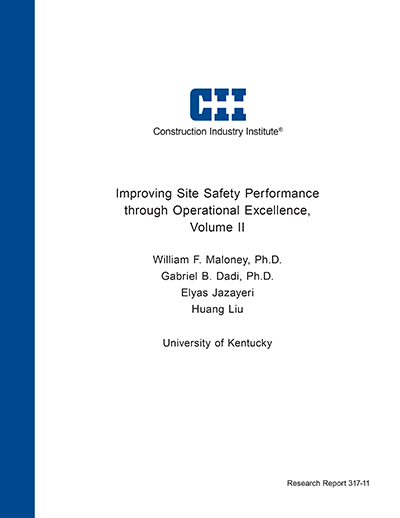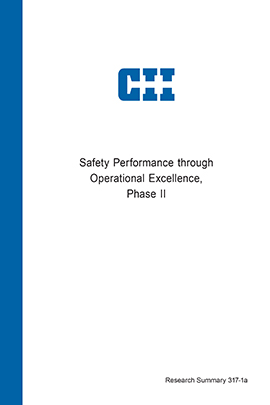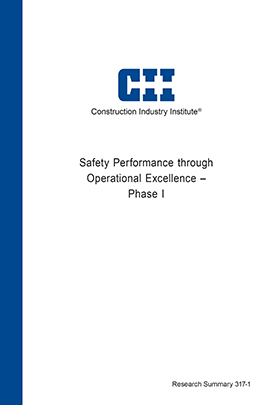
Improving Site Safety Performance through Operational Excellence, Volume II
Construction Industry Institute’s Research Team 317 was established in 2014 to examine the feasibility of translating the concept of Operational Discipline from the chemical and process industries to the construction project industry to serve as a vehicle for improving construction project safety, The team changed the term from Operational Discipline to be consistent with current industry practice and defined it as: “Doing the Right Thing, the Right Way, Every Time – Even When No One is Watching.”
The first two years of the team’s activities were spent conducting an extensive literature review, holding discussions with safety professionals and domain experts in safety and organizational culture, and team discussions. The goal was to develop a conceptual model of Operational Excellence for construction project safety. Presentations were given at Construction User Roundtable safety committees and contractor associations to solicit input and feedback. Throughout this process, feedback was extremely positive.
The model was structured around the following 13 safety drivers:
- Employee Engagement
- Human Performance & Factors
- Just & Fair Practices & Procedures
- Organizational Learning
- Owner’s Role
- Rewards & Recognition
- Risk Awareness, Management, & Tolerance
- Shared Values, Beliefs, and Assumptions
- Strategic Safety Communication
- Subcontractor Management
- Training & Competence
- Transformational Leadership
- Worksite Organization
The model was synthesized from numerous fields: organizational management and culture, organizational psychology, safety management, Six Sigma, and Quality Function Deployment. The resulting model, based on the Quality Tree concept, has 13 safety drivers, 77 Critical to Safety elements, 276 Critical to Expectations elements, and 313 Specifications & Metrics.
A test of the model’s validity was conducted to assess whether the model addressed what it was designed to do. Three measures of validity – construct, content, and face validity were evaluated. An online survey of professionals was conducted and the results indicated that the model was valid. A total of 92 individuals participated in the study, with 45 completing the survey.
The initial model assumed that the safety drivers were of equal weight. Data were gathered through an online survey of safety and construction professionals and the data analyzed using the Analytic Hierarchy Process to establish individual weights for the drivers. The respondents strongly believed that the Owner’s Role is the most important of the drivers.
The model was operationalized and placed on line. Projects were solicited from a variety of sources. A total of 9 projects participated to the extent that complete data were provided for the Corporate, Project, and Site levels. There was great variation between the organization levels and between projects. The primary finding was the significant decline in operational excellence scores from the Corporate to the Site level. Partial data from other projects was provided as well as data about and from owners.
The Operational Excellence model is comprehensive, holistic, and complex. Further development and refinement of the model depends on increased participation by owner and contractor organizations.



